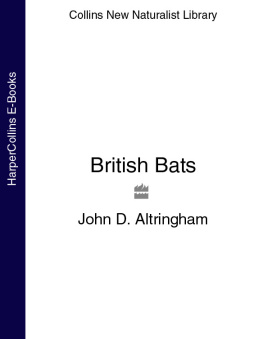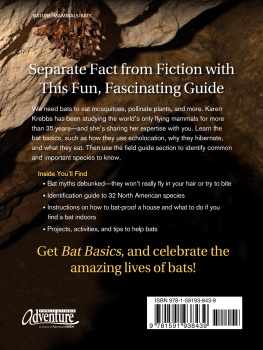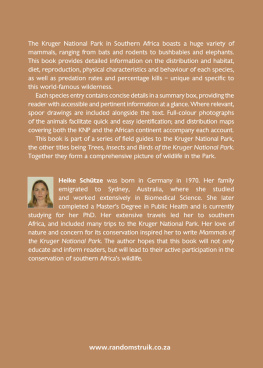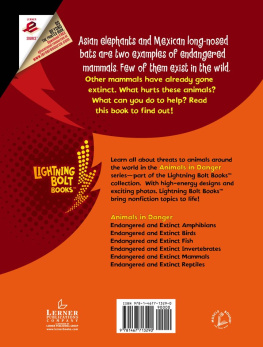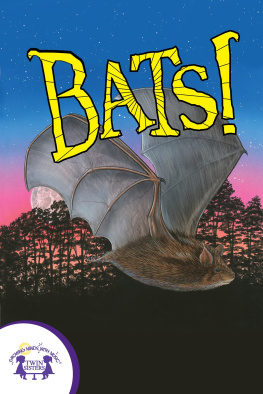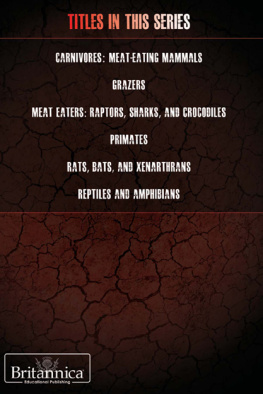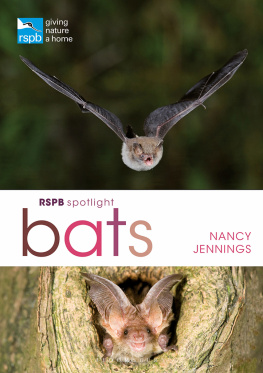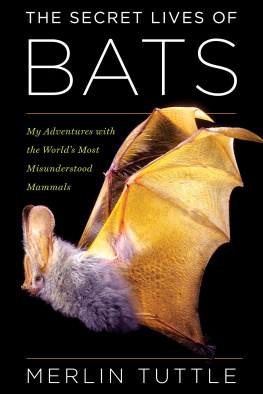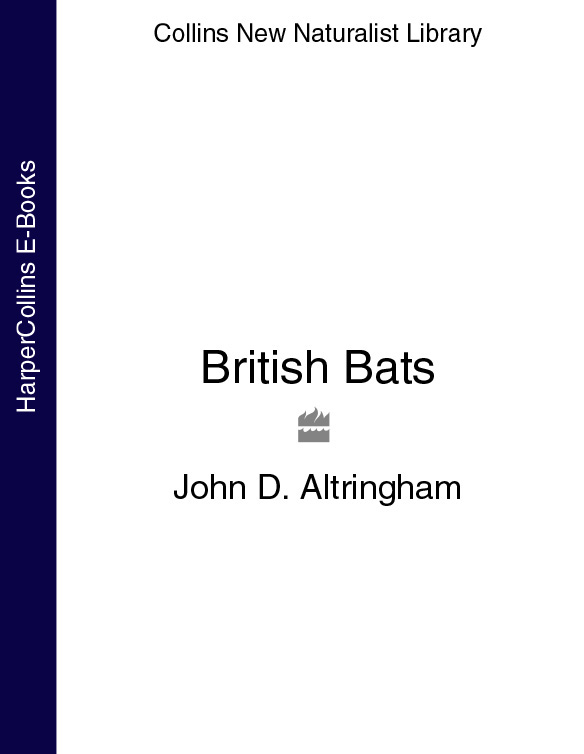HarperCollinsPublishers
7785 Fulham Palace Road
Hammersmith
London W6 8JB
www.harpercollins.co.uk
Collins is a registered trademark of HarperCollinsPublishers Ltd.
First published 2003
John D. Altringham 2003
The author asserts his moral rights to be identified as the author of this work
All rights reserved under International and Pan-American Copyright Conventions. By payment of the required fees, you have been granted the nonexclusive, nontransferable right to access and read the text of this e-book on-screen. No part of this text may be reproduced, transmitted, downloaded, decompiled, reverse-engineered, or stored in or introduced into any information storage and retrieval system, in any form or by any means, whether electronic or mechanical, now known or hereinafter invented, without the express written permission of HarperCollins.
HarperCollinsPublishers has made every reasonable effort to ensure that any picture content and written content in this ebook has been included or removed in accordance with the contractual and technological constraints in operation at the time of publication.
Source ISBN: 9780007308682
Ebook Edition MAY 2014 ISBN: 9780007406036
Version: 2014-05-15
Sarah A. Corbet ScD
S.M.Walters, ScD, VMH
Prof. Richard West, ScD, FRS, FGS
David Streeter, FIBiol
Derek A. Ratcliffe
The aim of this series is to interest the general reader in the wildlife of Britain by recapturing the enquiring spirit of the old naturalists. The editors believe that the natural pride of the British public in the native flora and fauna, to which must be added concern for their conservation, is best fostered by maintaining a high standard of accuracy combined with clarity of exposition in presenting the results of modern scientific research.
I was surprised and delighted to be asked to write this book, being well aware of the long tradition behind the New Naturalist titles. Despite this long tradition, the New Naturalists is a very diverse series, so I did not feel bound by convention to a particular style or format. How then would I write this book? As a research scientist I am trained to ask questions and to attempt to explain what I see. I want to understand how and why the natural world works as it does, fitting my observations into a scientifically robust evolutionary framework. My aim has therefore been to describe the fascinating natural history of bats, but to do so in a functional and evolutionary context. This has meant introducing some concepts and processes that may not be familiar to all amateur natural historians. However, I believe this approach helps to bring meaning to natural history, making it more interesting and cohesive. Potentially unfamiliar concepts and terms are explained as they are introduced and I have also provided a glossary at the end of the book. My hope is that this investigative approach will be taken up by the more active bat naturalists. To this end I have made some suggestions for research that amateurs can tackle. I have also discussed equipment and techniques in some detail. However, first and foremost, this is a book about the natural history of British bats, a New Naturalist title that is long overdue, given the prominent place bats have in our native fauna. I only hope that my efforts have done the subject justice.
I knew from the start who would illustrate the book. It is a feast to the eye, thanks to Frank Greenaways stunning photographs in the centre of the book and Tom McOwats beautiful drawings. I will not forget the evening at Franks, sitting back after a good dinner to the difficult task of choosing these few photographs from the hundreds on offer. I gave Tom an extravagant wish list of possible drawings, hoping he would find the time to tackle at least half of them. I should have known that he would do all of them, and all to his exacting standards.
I have worked with bats for almost 20 years with an ever-growing band of fellow enthusiasts. I would like to thank them for making it so much fun and for helping me acquire the knowledge I needed to write this book. I cannot name them all, but some deserve a special mention. The cast, in approximate order of appearance, is: David Bullock, Charles Critchley, Kirsty Park, Gareth Jones, Geoff Billington, Dean Waters, Ruth Warren, Brock Fenton, Chris Wright, Kathy Meakin, Paula Senior, Nicky Green, James Aegerter, Anita Glover and Eleni Papadatou.
Isobel Smales edited the book with a light but firm hand, drawing my attention to a number of clumsy errors, reining me in once or twice when I got carried away on peripheral issues and pointing out the need for further explanation where I had provided too little. Kirsty Park and Paula Senior read the entire manuscript and provided valuable comments. Thanks also to the many people, unfortunately too many to name, who gave me access to unwritten thoughts or unpublished information. Tony Mitchell-Jones provided valuable summaries of the English Nature hibernacula database.
Balancing family life with a day job in research and teaching, and a night job chasing bats, requires some effort. It is a measure of the patience and understanding of my wife Kate that I was able to add the additional burden of this book to my long list of commitments, knowing I would get encouragement and help as well as understanding.
John D. Altringham
Britain now has fewer than 50 species of truly native land mammals and of these more than a third are bats. Given the important place that they occupy in our fauna it might be thought surprising that the New Naturalist series has not produced a volume on bats long before this. In fact the editorial archive reveals that the subject of a bat volume was first discussed in 1959. Ten years later the idea was still on the table when it was concluded that there was insufficient demand to proceed with the project! The last two decades have witnessed a huge increase in interest in our bats fuelled by a combination of academic research and the activities of organisations such as the Bat Conservation Trust and local bat groups. So it is with an unusually high sense of satisfaction that the Editors welcome this addition to the New Naturalist library, some 43 years after it was first mooted and during which time four new species of bats have been added to the British fauna!
Bats have not always been held in a particularly high regard in the popular imagination, being associated with witches and vampires and the forces of darkness. However, this is but one of many aspects of bat lore where all is not what it seems. Most naturalists will know that our commonest bat by a long way is the pipistrelle. Yet even this apparently secure piece of natural history now has to be revised as modern techniques of ultrasound recording have revealed that where there was one there are now two species.
Bats are unique among mammals in the evolution of powered flight and this, together with their possession of a highly developed system of echolocation by which they navigate and capture their prey, serves to further increase their fascination. We were particularly fortunate to find the ideal author to bring to life and explain these special areas of bat biology and to bring us up to date with the most recent ideas. John Altringham is Professor of Biomechanics in the School of Biology at the University of Leeds. He is a distinguished authority on the mechanics of animal locomotion which he combines with a particular interest in the biology and natural history of bats. A particular feature of the book is his discussion of bat communities and the ways in which the different species interact. This approach is of critical importance for those concerned with habitat management for bats.

